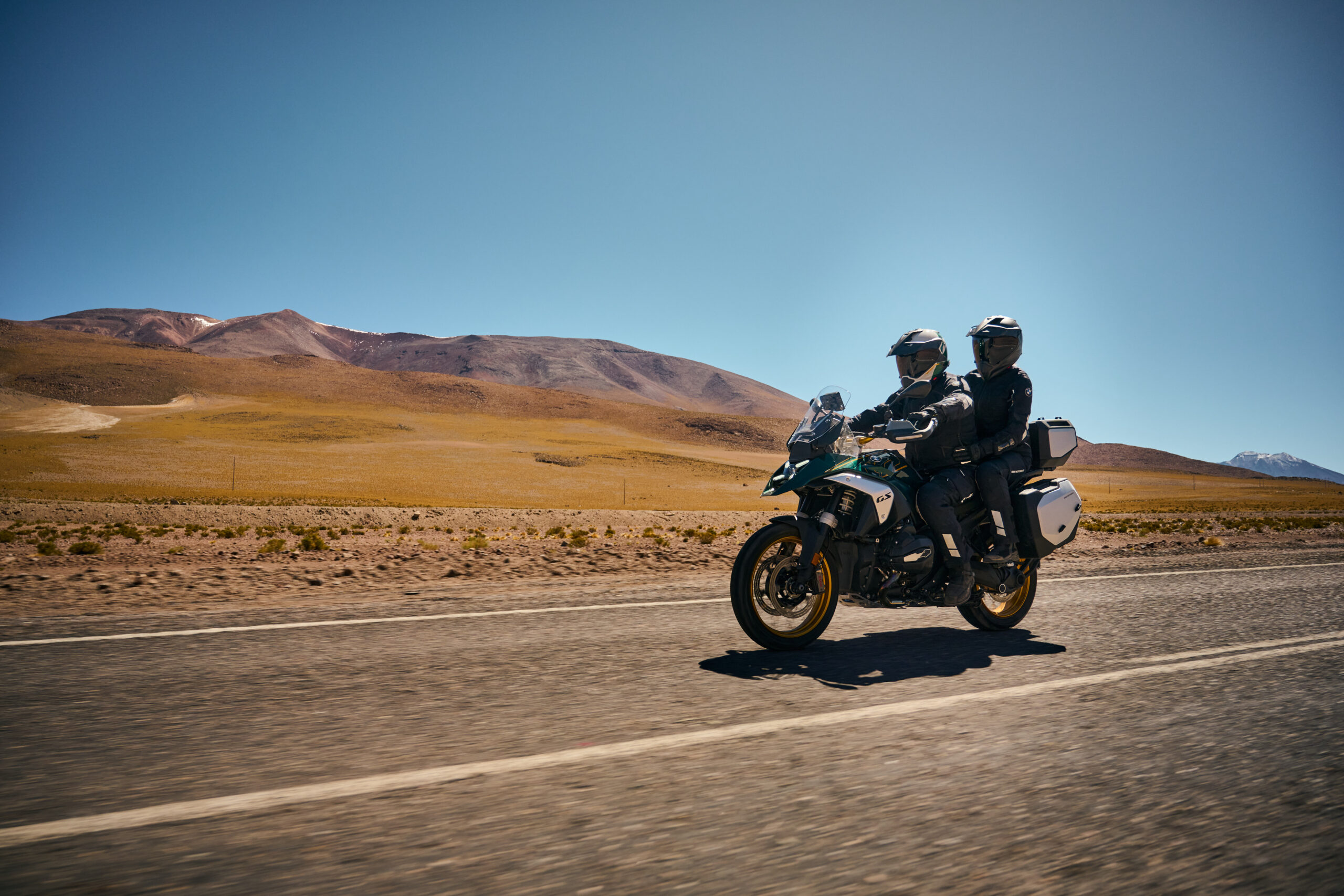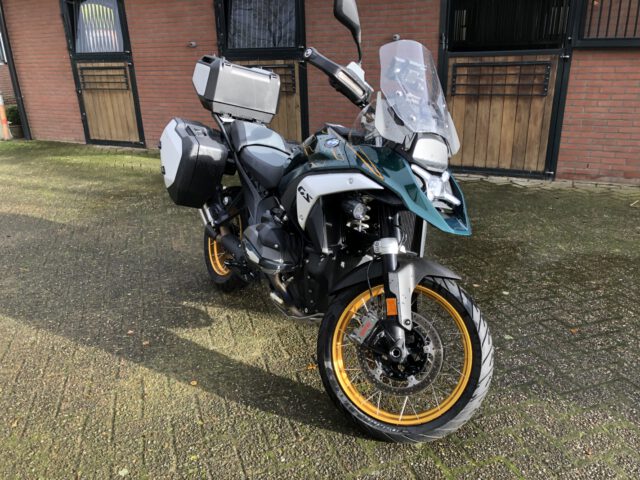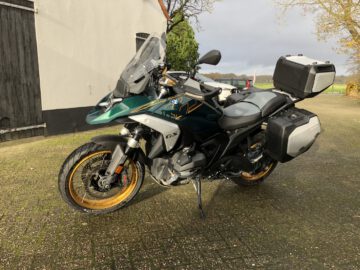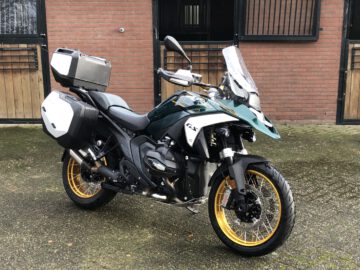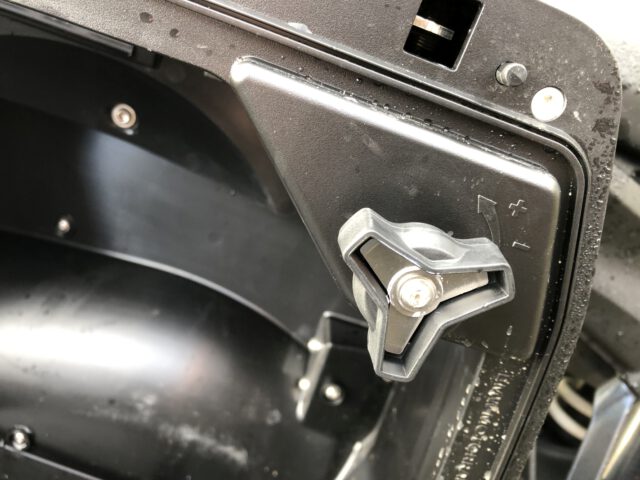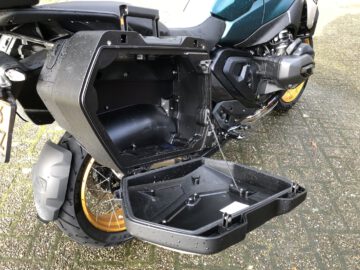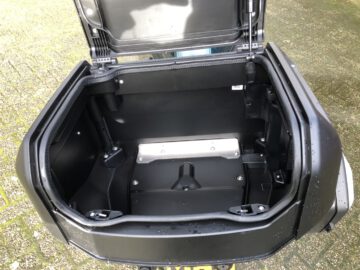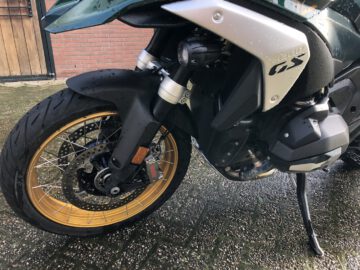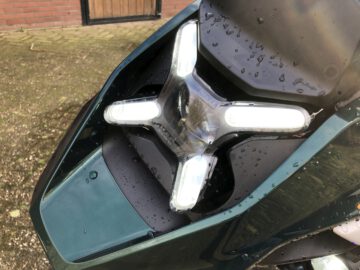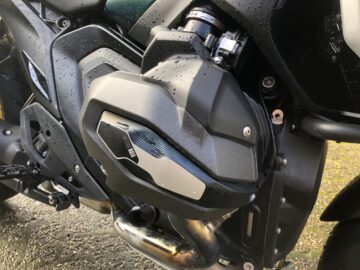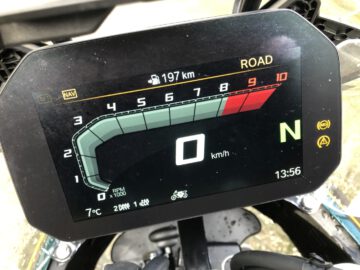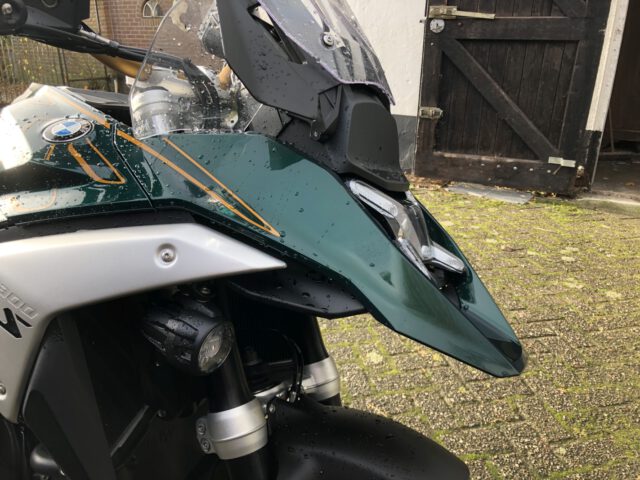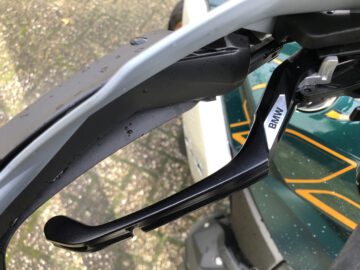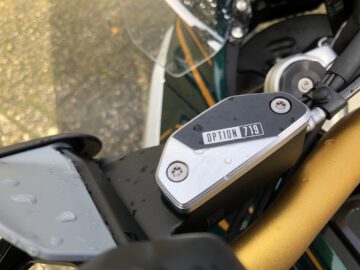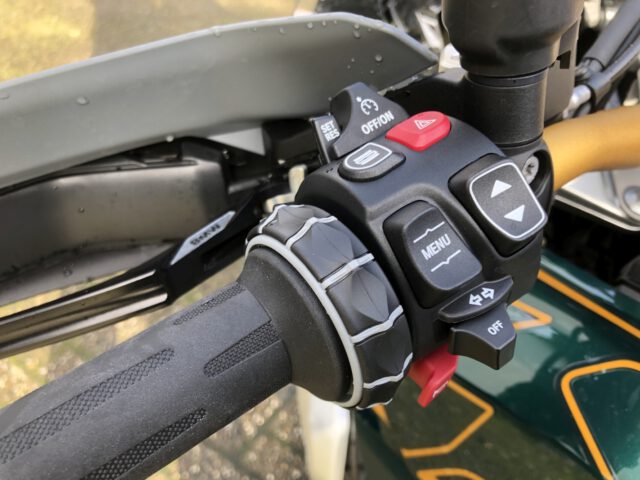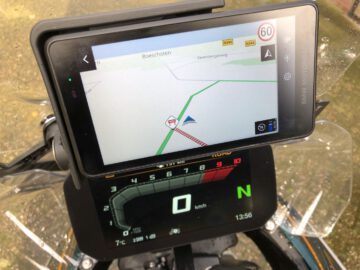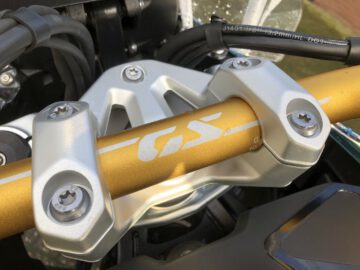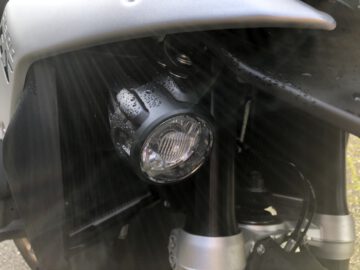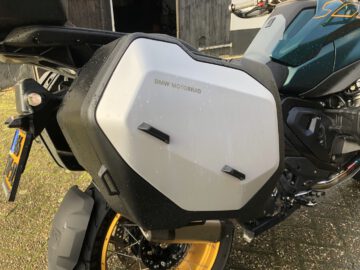Engine test – BMW R 1300 GS
The BMW R 1250 GS has been breaking sales records for years. Now it is the turn of the R 1300 GS, a completely new successor. Frame, engine block, design and suspension are completely different. No screw remained the same. It results in a sleeker motorcycle with lower weight, with a boxer of exactly 1,300cc delivering more power and pulling power.
Automatic height adjustment
850 mm is the saddle height. That’s quite the size if you’re a bit shorter in stature. However, the BMW R 1300 GS has a remarkably narrow saddle, which helps get your stilts to the ground. Furthermore, the automatic height adjustment (optional) causes the motorcycle to drop 3 centimeters just before the stop. As soon as you drive away, it rises again. Perfect! Triumph also introduced such a system on its Tiger 1200 but with 2 inches of adjustment.
BMW R 1300 GS 12 kg lighter
You immediately notice that the R 1300 GS feels much more nimble and handles even more easily than its predecessor, the R 1250 GS, which has excelled in this regard for years. That’s really not just in a 12 kg lower weight. That now amounts to 237 kg driveable. The fine handling also comes from the seating position, the handlebars placed close to you and the narrow waist of saddle and tank.
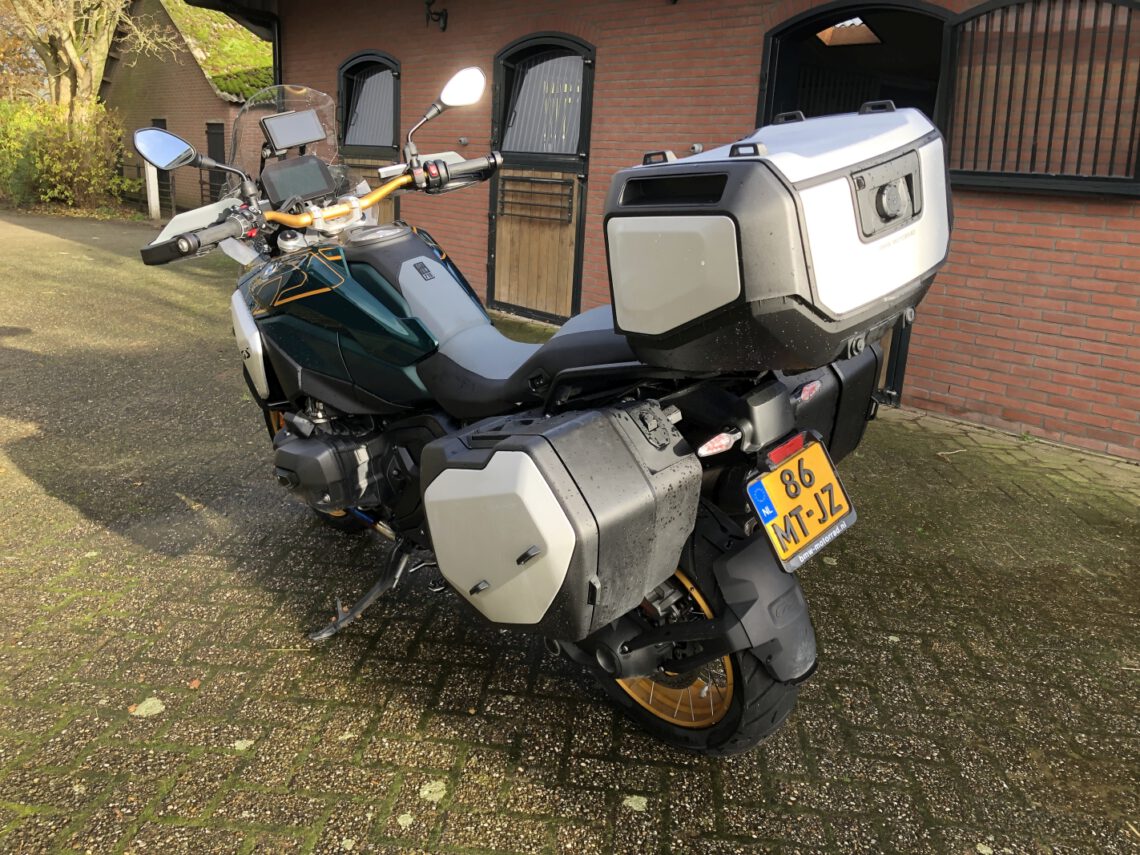
Clever those adjustable cases
The test R 1300 GS is richly equipped, a version Option 719 Tramuntana, including a complete set of side cases and top case. Those side cases are of the new Vario type. You can infinitely narrow or widen them with a dial on the inside. According to your need for space. In the widest position they do stick out beyond your handlebars, so watch out when driving through a narrower passage!
Turn signals in hand guards: a plus
Driving between traffic jams, you notice that motorists perceive you quickly. That will no doubt be due to the turn signals integrated into the hand guards (LED). This is because they are at car mirror height and while flashing, they attract the attention of car drivers faster. The highly unusual headlight in the form of a light cross with LED matrix lighting does the rest. By the way, there is considerable light in the somewhat thin-looking headlight.
New electronically controlled suspension
The R 1300 GS we are testing here is equipped with the new electronic Dynamic Suspension Adjustment (DSA). Which goes one step further than BMW’s tried-and-true ESA. It controls damping adjustment not only at the rear but now also at the front, simultaneously adjusting spring travel (spring stiffness) and ride height – depending on the selected driving mode, conditions and maneuvers. The aforementioned adaptive height control is part of DSA.
Floating carpet
That DSA is really a boon. Automatic suspension adjustment also provides load compensation. Whether riding solo, in pairs or with hefty luggage, DSA guarantees that the bike is always as well sprung as possible. This makes for fine handling, sharper steering and still plenty of comfort. You can write the latter with a big C. In practice, comfort is sublime. Large and small bumps are smoothed out and yet the bike always steers stably. Like sitting on a floating carpet.
What power!
The twin-cylinder boxer now delivers 107 kW (145 hp), 9 hp more than the R 1250 GS. Traction has been increased by 6 Nm to 149 Nm. This is a hefty value and you notice it. The 1300 GS responds sharply to the throttle and actually pulls up very smoothly from as early as about 2000 rpm. At just over 6,000 rpm, maximum torque is reached. Then the boxer pulls at it like crazy. What power!
Boxer engine more compact
BMW claims to have made the cylinders a bit more compact through a different camshaft drive. And indeed, if you put the 1300 next to a 1250 GS you will see that too. Furthermore, the block is remarkably shorter and the cylinders seem to hang just a little higher in the crankcase. I am sure it is because the gearbox is now placed at the bottom of the block and not behind it as before.
Switching assistance? Welcome
The gearbox shifts fine, but then you have to shift cleanly. Anyone who drives a BMW boxer knows that shifting is very smooth if you pay a little attention to the revs. So a toehold on downshifting helps. With the quickshifter Shift Assist, that comes naturally. BMW has also further refined this system. The electronic shift assist, meaning shifting without using the clutch, works accurately and virtually jerk-free. Then, in the first three gears, the revs should not be too low, otherwise the Shift Assist sometimes wants to hesitate.
Electronic assistance
New motorcycles turn into driving computers. BMW Motorrad is now quite ahead in this regard. You look out on a super bright and razor sharp TFT color screen, in which you will find a comprehensive menu structure. You walk and scroll through that via the multicontroller on the left side of the handlebars: the turn-and-pressure ring that BMW has actually used on its motorcycles for years. A kind of mouse control it is. You get the effect quickly.
Standard complete
In the menus you will find numerous settings and options. In fact, you control everything through the multicontroller, including the optional seat heater and the standard handlebar heater. We won’t bother you with all the systems, but we’ll mention them. Brace yourself, the BMW R 1300 GS has standard Engine Drag Control (MSR), Dynamic Cruise Control, Dynamic Brake Assist (DBC), keyless ride and Hill Start Control (HSC).
But there is much more
You can also check the following options: Riding Assistant with Active Cruise Control (ACC), the aforementioned DSA, Front Collision Warning (FCW) and Lane Change Warning (SWW). The latter is a warning with lighted triangles in the mirrors if there is a vehicle driving next to you in the blind spot. If you check everything, you slide the purchase price well above 30 grand. Standard buy a BMW R 1300 GS now (2023) starts at 23,250 euros. There is no chance of getting it delivered this year. Before 2023, everything has already been sold.

